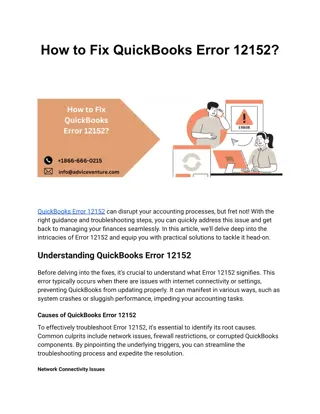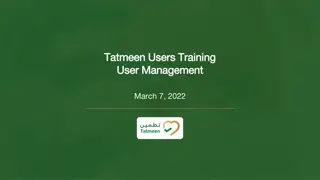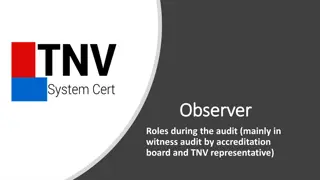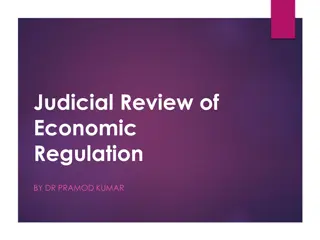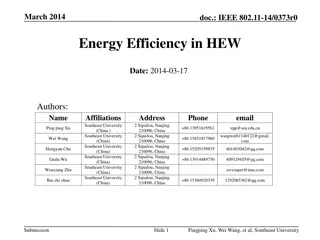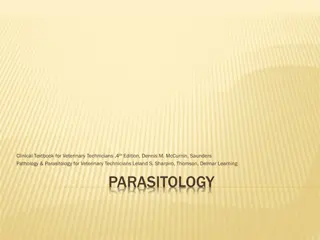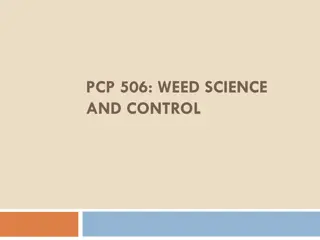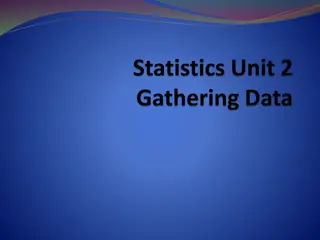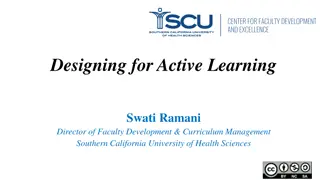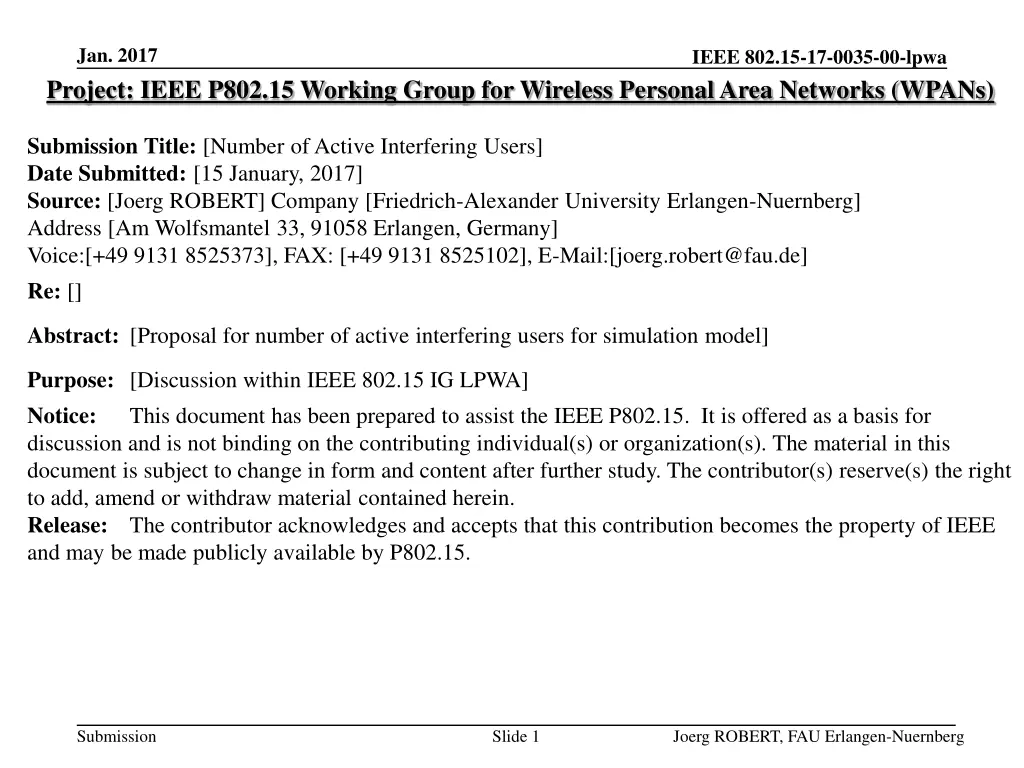
IEEE WPANs: Active Interfering Users Proposal
Explore a proposal discussing the number of active interfering users for simulation models within the IEEE 802.15 Working Group for Wireless Personal Area Networks. The document addresses the limited frequency spectrum, intra-system interference, population densities in various areas, and usage assumptions related to device activity and access rates. This submission aims to evaluate algorithm performance in dense networks based on different interference classes.
Download Presentation

Please find below an Image/Link to download the presentation.
The content on the website is provided AS IS for your information and personal use only. It may not be sold, licensed, or shared on other websites without obtaining consent from the author. If you encounter any issues during the download, it is possible that the publisher has removed the file from their server.
You are allowed to download the files provided on this website for personal or commercial use, subject to the condition that they are used lawfully. All files are the property of their respective owners.
The content on the website is provided AS IS for your information and personal use only. It may not be sold, licensed, or shared on other websites without obtaining consent from the author.
E N D
Presentation Transcript
Jan. 2017 Project: IEEE P802.15 Working Group for Wireless Personal Area Networks (WPANs) IEEE 802.15-17-0035-00-lpwa Submission Title: [Number of Active Interfering Users] Date Submitted: [15 January, 2017] Source: [Joerg ROBERT] Company [Friedrich-Alexander University Erlangen-Nuernberg] Address [Am Wolfsmantel 33, 91058 Erlangen, Germany] Voice:[+49 9131 8525373], FAX: [+49 9131 8525102], E-Mail:[joerg.robert@fau.de] Re: [] Abstract: [Proposal for number of active interfering users for simulation model] Purpose: [Discussion within IEEE 802.15 IG LPWA] Notice: This document has been prepared to assist the IEEE P802.15. It is offered as a basis for discussion and is not binding on the contributing individual(s) or organization(s). The material in this document is subject to change in form and content after further study. The contributor(s) reserve(s) the right to add, amend or withdraw material contained herein. Release: The contributor acknowledges and accepts that this contribution becomes the property of IEEE and may be made publicly available by P802.15. Submission Slide 1 Joerg ROBERT, FAU Erlangen-Nuernberg
Jan. 2017 IEEE 802.15-17-0035-00-lpwa Number of Active Interfering Users Joerg Robert FAU Erlangen-Nuernberg Submission Slide 2 Joerg Robert, FAU Erlangen-Nuernberg
Jan. 2017 IEEE 802.15-17-0035-00-lpwa Motivation The available frequency spectrum is highly limited The performance in dense networks is an important criteria to evaluate the suitability of algorithms Here: Intra-system interference Four different classes proposed in use-case document [2] Low, Medium, High, Very High Potential parametrization is focus of this document Submission Slide 3 Joerg Robert, FAU Erlangen-Nuernberg
Jan. 2017 IEEE 802.15-17-0035-00-lpwa Population Density in Different Areas Region Paris Paris (Metropolitan area) London London (Metropolitan area) Berlin Atlanta (Metropolitan area) Germany France USA Kansas Population Density (1/km ) 21,000 722 5,518 1,655 4,000 255 227 116 35 13.5 Source: Wikipedia Submission Slide 4 Joerg Robert, FAU Erlangen-Nuernberg
Jan. 2017 IEEE 802.15-17-0035-00-lpwa Usage Assumptions On average every person has 10 devices The average activity of a device is 1 transmission / h Each person results in 2.7 10 3 accesses per second Parameters to demonstrate resulting traffic Cell radius of 10km 314km Cell radius of 1km 3.14km Submission Slide 5 Joerg Robert, FAU Erlangen-Nuernberg
Jan. 2017 IEEE 802.15-17-0035-00-lpwa Resulting Arrival Rates Area Mean Arrival Rate ? [1/s/km ] 1km-Mean Arrival Rate ?[1/s] 10km-Mean Arrival Rate ?[1/s] Paris 58.3 183 18,325 Paris (M.a.) 2.0 6.3 630 London 15.3 48 4,815 London (M.a.) 4.6 14.4 1,444 Berlin 11.1 34.9 3,490 Atlanta (M.a.) 0.71 2.2 223 Germany 0.63 2.0 198 France 0.32 1.0 101 USA 0.097 0.31 31 Kansas 0.038 0.12 12 Submission Slide 6 Joerg Robert, FAU Erlangen-Nuernberg
Jan. 2017 IEEE 802.15-17-0035-00-lpwa Proposed Classes Class Low Medium High Very High Mean Arrival Rate ? [1/s/km ] 0.1 1 10 50 Submission Slide 7 Joerg Robert, FAU Erlangen-Nuernberg
Jan. 2017 IEEE 802.15-17-0035-00-lpwa Further Assumptions Assumption of Poisson arrival process [1] Activity of nodes is mutually independent MAC simulations have to consider cell size to calculate mean arrival rate ? within cell PHY simulations have to consider infinite plane to estimate impact Also nodes outside the actual cell may interfere Weighting of interfering nodes using channel model Interfering nodes are randomly located Submission Slide 8 Joerg Robert, FAU Erlangen-Nuernberg
Jan. 2017 IEEE 802.15-17-0035-00-lpwa Infinite Plane ???? ???? ???? is the minimum distance between the base-station and the closest interferer (required by channel model) ???? is the distance up to the interferer impairs the base-station (no impact if below thermal noise level, depends on pathloss model) Submission Slide 9 Joerg Robert, FAU Erlangen-Nuernberg
Jan. 2017 IEEE 802.15-17-0035-00-lpwa Open Issues Do we have to consider the available bandwidth? Mean arrival rate per MHz? Parameters of the interfering traffic? Short 16 byte packets? ...? Submission Slide 10 Joerg Robert, FAU Erlangen-Nuernberg
Jan. 2017 IEEE 802.15-17-0035-00-lpwa Thank You! Discussion? Submission Slide 11 Joerg Robert, FAU Erlangen-Nuernberg
Jan. 2017 IEEE 802.15-17-0035-00-lpwa Literature [1] Bertsekas, D., Gallager, R. Data networks. Vol. 2. New Jersey: Prentice-Hall International, 1992 [2] Potential Use-Cases for LPWA, IEEE 802.15-16/770r2 Submission Slide 12 Joerg Robert, FAU Erlangen-Nuernberg


